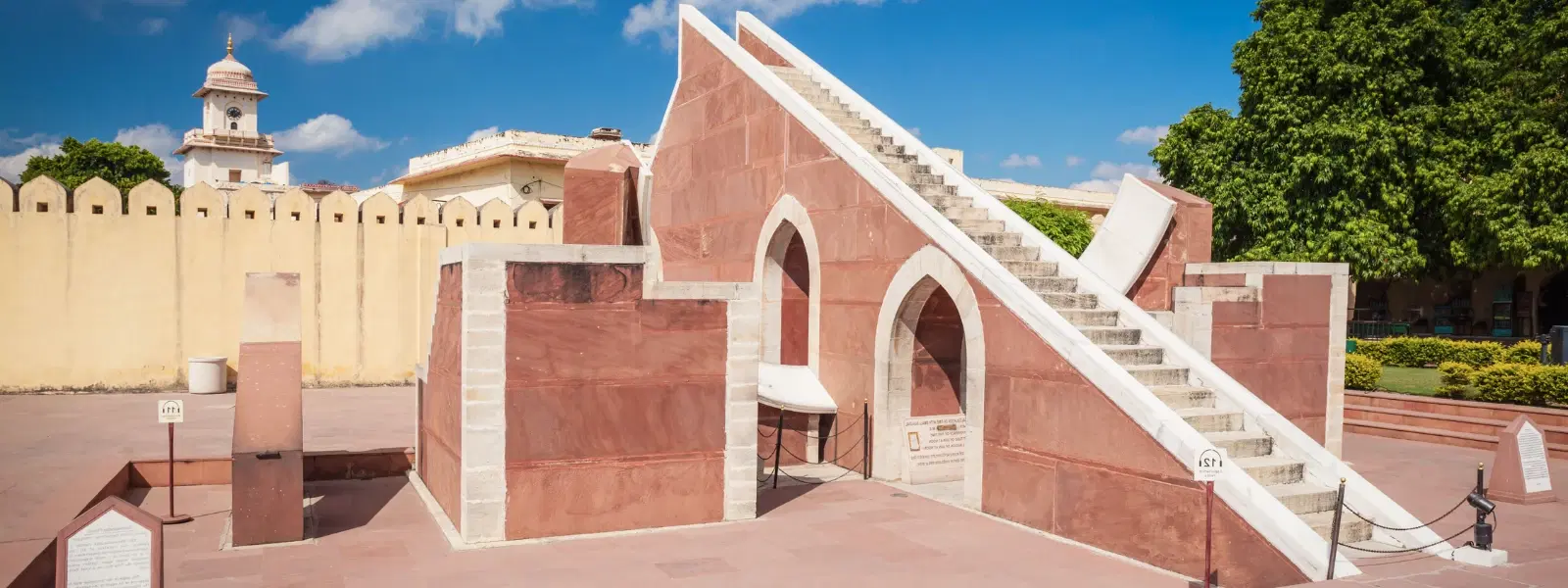
Flights
•03 min read

Long before telescopes and satellites, ancient India gazed at the stars with awe and precision, crafting observatories that still stand as architectural and scientific marvels. This blog invites you on a journey to explore India's heritage observatories, brilliant monuments that not only advanced ancient Indian astronomy but also fused science, culture, and spirituality into unforgettable structures.
India's fascination with the night sky finds its roots in ancient texts like the Surya Siddhanta, and the pioneering work of scholars such as Aryabhata and Varahamihira. Astronomy in ancient India was not just about understanding celestial bodies; it was interwoven with religious rituals, agricultural practices, and navigation. The meticulous observations recorded in these early works highlight how intertwined celestial knowledge was with everyday life.
Observatories were essential in ancient India to track celestial movements, predict eclipses, and construct precise calendars. These observatories served a dual role, functioning as scientific hubs and as spiritual sanctuaries. They were cultural centers where the heavens met human curiosity, allowing ancient astronomers to reveal the mysteries of the cosmos.
The Jantar Mantar observatories, built by Maharaja Jai Singh II, stand as striking embodiments of historic astronomy in India. Located in Jaipur, Delhi, Ujjain, Mathura, and Varanasi, these astronomical sites feature ingenious instruments like the Samrat Yantra and Jai Prakash Yantra. Each structure is a testament to the melding of art, science, and precise engineering.
In the heart of Madhya Pradesh, the lesser-known Udayagiri observatory reveals intriguing aspects of ancient skywatching. Its historical importance lies in its early role in cataloging the stars and interpreting celestial events, echoing the same spirit of exploration and meticulous observation found at larger sites.
From the sculptural wonders of Khajuraho to the remnants of astronomical innovation in Vijayanagara, several old observatories in India offer unique narratives. Each site presents a distinct blend of design and functionality that contributed to the scientific discipline known as traditional astronomy in India.

Ancient Indian skywatching sites showcase an exquisite fusion of science and architecture. The fusion is evident in the careful geometric designs, precise alignments with celestial bodies, and the utilization of durable materials that have withstood the test of time. Architectural marvels of Indian observatories remind us that these were not merely utilitarian structures but also masterpieces of design.
Beyond their technical prowess, heritage observatories of India symbolized royal power and cultural pride. They were crafted to reflect not only the scientific acumen of their creators but also the spiritual and cultural identity of the nation, acting as visible markers of a deep-seated connection with the cosmos.
The astronomical data meticulously gathered at these sites laid the groundwork for modern advancements in trigonometry and timekeeping. By charting the heavens with exceptional accuracy, ancient observatories in India provided a foundational base on which modern astronomical studies continue to build, merging historical insights with contemporary science.
Today, efforts to preserve these architectural and scientific treasures have led to many being recognized as UNESCO World Heritage Sites. They remain popular tourist attractions and educational centers, where travelers and researchers alike can appreciate the rich legacy of ancient Indian astronomy.
The Jantar Mantar in Jaipur houses the largest stone sundial in the world, capable of measuring time to an accuracy of just 2 seconds!

The oldest observatory in India is the Jantar Mantar in Delhi, built by Maharaja Jai Singh II in 1724.
The five observatories built by Maharaja Jai Singh II are located in Jaipur, Delhi, Ujjain, Mathura, and Varanasi.
These observatories were crucial for tracking celestial movements, developing accurate calendars, and advancing the field of astronomy through precise observations.
Many have been declared UNESCO World Heritage Sites and continue to be maintained as cultural and educational landmarks.
They uniquely blend scientific precision with architectural brilliance, reflecting both cultural and spiritual dimensions of ancient Indian society.
India's ancient observatories are timeless testaments to the nation’s scientific ingenuity, cultural richness, and architectural brilliance. They not only reveal an advanced understanding of celestial phenomena but also inspire awe with their ability to merge science with art and spirituality. By exploring these old observatories in India, readers can gain a deeper appreciation for how ancient knowledge continues to shape modern perspectives on the cosmos.